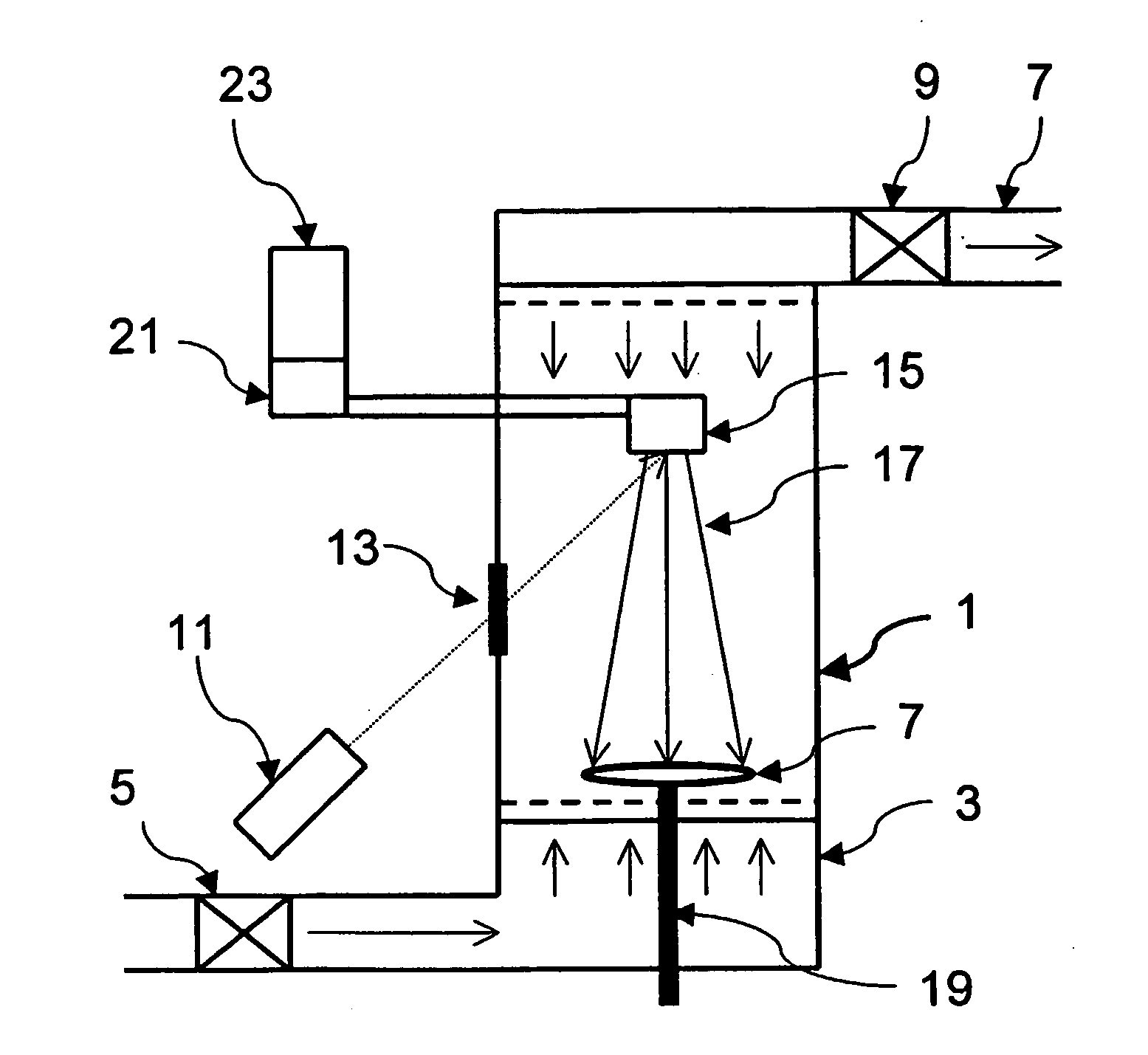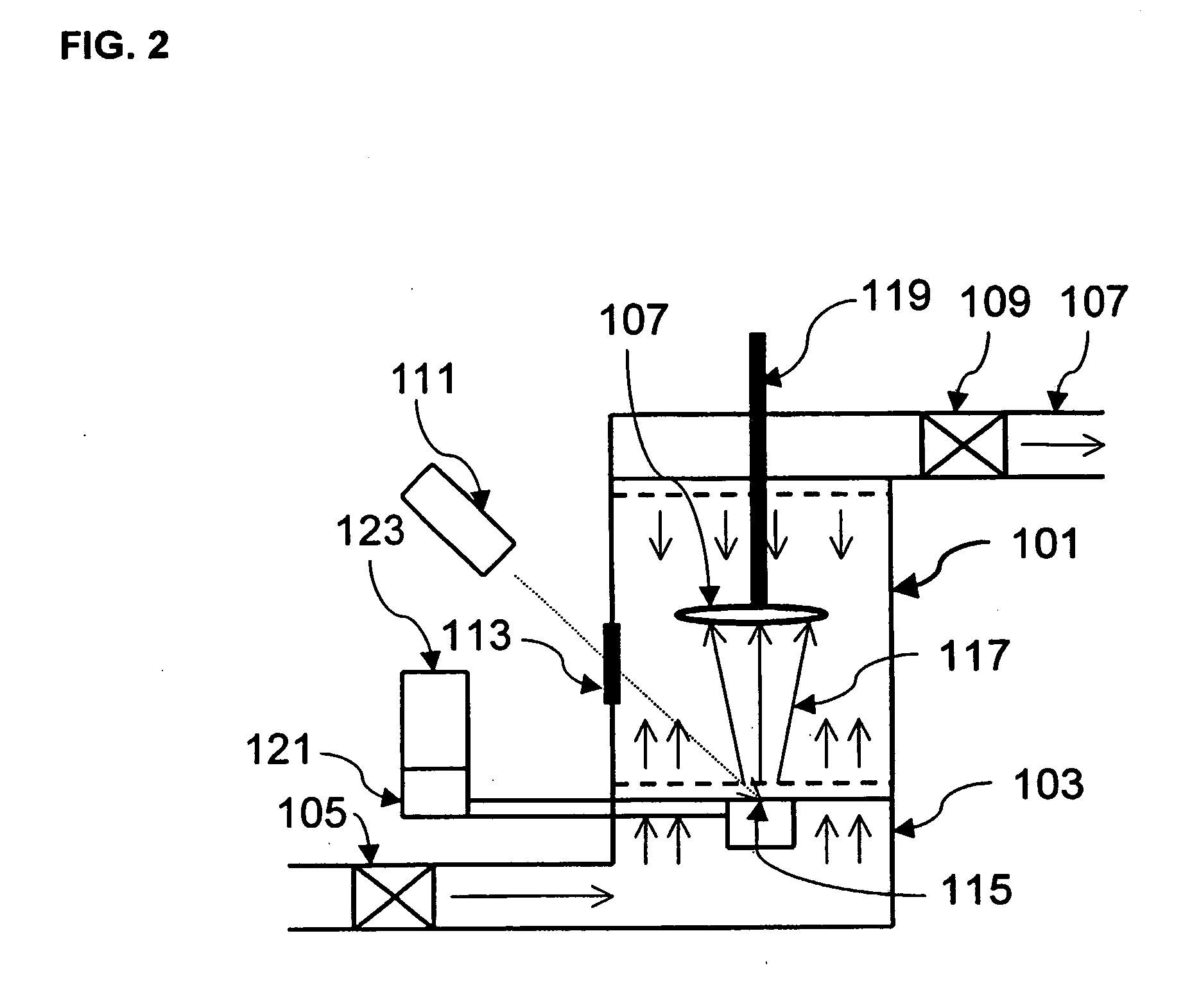Method of pulsed laser assisted surface modification
a technology of laser assisted surface and laser assisted coating, which is applied in the direction of vacuum evaporation coating, coating, electric heating, etc., can solve the problems of poor adhesion and composition control, long reaction time, and limited processing, and achieves improved surface properties, low processing and equipment costs, and high uniformity.
- Summary
- Abstract
- Description
- Claims
- Application Information
AI Technical Summary
Benefits of technology
Problems solved by technology
Method used
Image
Examples
example 1
Biodegradable PLGA Coatings
[0062] A coating of poly(lactic-co-glycolic acid) (PLGA) onto glass slides was produced in accordance with the present invention. PLGA is a resorbable polymer widely used in sutures and injectable drug delivery. A PLGA target was prepared by heating 4.0 grams of PLGA pellets (Lactel 50:50 DL, BPI, IV=0.59, Lot#D01 070) to 110° C. 1 inch metal die for 45 minutes and pressed at 5,000 psi in a Carver press for 30 minutes, allowed to cool to room temperature. The circular target was placed onto a target rotator at the bottom of the coating chamber and a glass slide was fixed on an opposing substrate rotator at the top at a distance of 3 cm from the target. Additional coatings were performed placing 80-mesh mask onto the glass slide to demonstrate the ability of coating defined areas. The chamber was purged to 5 Torr and helium or room air introduced into the chamber from below at 80 to 500 milliliters per minute for several runs with a resulting pressure of ...
example 2
Surface Modification with Tetracycline in PLGA Scaffold
[0063] A coating of 12.5% tetracycline, USP in poly(lactic-co-glycolic acid) (PLGA) was produced onto round glass slide coverslips under similar conditions as Example 1. Tetracycline-loaded resorbable membranes (Webber, Lago et al. 1998) and fibers (Norkiewicz, Breault et al. 2001) have been investigated for local delivery to prevent bacterial growth following periodontal surgery. In addition, bioceramic coatings onto catheters has also been proposed as a method of reducing bacterial attachment (Zabetakis, Cotell et al. 1995). In this example, a PLGA target was prepared by heating 3.5 grams of PLGA (Lactel 50:50 DL, BPI, IV=0.59, Lot#D01070) to 1000° C. in a glass beaker on a hotplate and adding 0.5 gram of tetracycline powder, USP (Spectrum Laboratories, Lot#QW039), mixing with a glass stir bar. The mixture was poured into a 1 inch metal die and allowed to cool to room temperature. The circular target was placed onto a target...
example 3
Biodegradable PLA Coatings
[0065] A coating of poly(1-lactic acid) (PLA) was produced onto a glass slide under similar conditions as Example 1. The target was prepared by heating 4.0 grams of PLA (Medisorb, PLA Methyl Ester 100L, Lot#00-141-5) to 140° C. in a 1 inch metal die for 45 minutes and pressed at 5,000 psi in a Carver press for 30 minutes, allowed to cool to room temperature. The circular target was placed onto a target rotator at the bottom of the coating chamber and a glass slide was fixed on an opposing substrate rotator at the top at a distance of 3 cm from the target. The chamber was purged to 5 Torr and helium or room air introduced into the chamber from below at 80 to 500 milliliters per minute for several runs with a resulting pressure of 5 to 500 Torr, as well as atmospheric pressure. The coating run was performed at laser energies of 150 to 600 mJ / cm2 at a pulse rate of 5 to 40 hertz for 1 to 5 minutes. At the end of the run room air was introduced and the substr...
PUM
| Property | Measurement | Unit |
|---|---|---|
| pressure | aaaaa | aaaaa |
| pressure | aaaaa | aaaaa |
| thickness | aaaaa | aaaaa |
Abstract
Description
Claims
Application Information
 Login to View More
Login to View More - R&D
- Intellectual Property
- Life Sciences
- Materials
- Tech Scout
- Unparalleled Data Quality
- Higher Quality Content
- 60% Fewer Hallucinations
Browse by: Latest US Patents, China's latest patents, Technical Efficacy Thesaurus, Application Domain, Technology Topic, Popular Technical Reports.
© 2025 PatSnap. All rights reserved.Legal|Privacy policy|Modern Slavery Act Transparency Statement|Sitemap|About US| Contact US: help@patsnap.com



